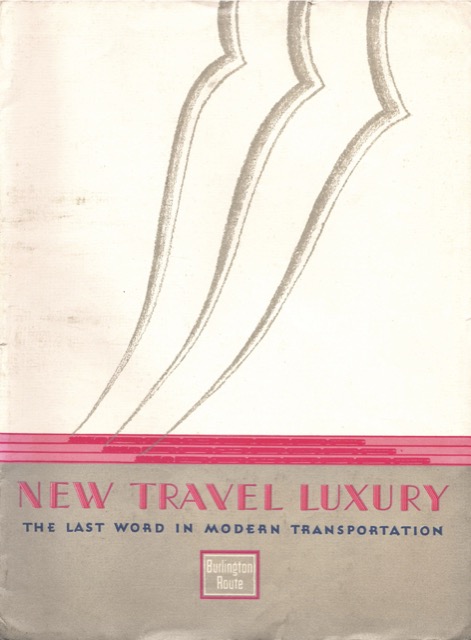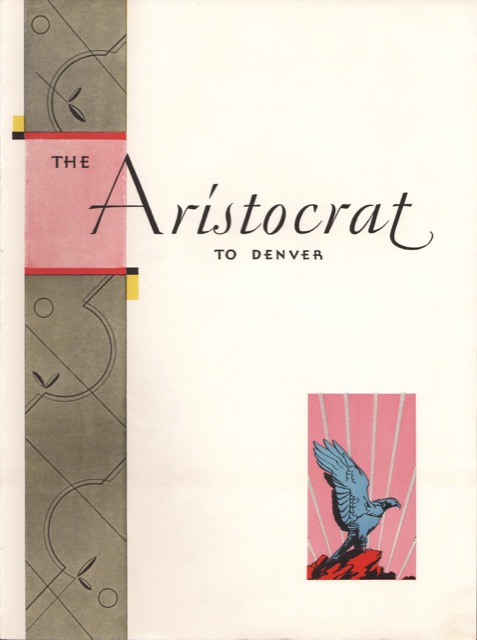In 1930, Burlington introduced three new trains on some of its premiere routes: Chicago-Denver, Chicago-Twin Cities, and Chicago-Omaha-Lincoln. Since 1930 was Burlington’s 80th year of operation, these were billed as the “Anniversary Fleet,” which was a bit of ridiculous hype as every year was some anniversary.
 Click image to download a 1.4-MB PDF of this folder.
Click image to download a 1.4-MB PDF of this folder.
To present the trains to the media, Burlington printed the above folder and stuffed it with large four-page brochures for each train, all of them decorated with art deco designs that would be absent from the trains themselves. In addition to the folder, today’s post features the Aristocrat brochure and the other two will be posted tomorrow.
 Click image to download a 2.6-MB PDF of this brochure.
Click image to download a 2.6-MB PDF of this brochure.
The Aristocrat replaced the more prosaically named Denver Limited and Chicago Limited as the premiere train on this route. The fixed consist of the new train was a baggage car, a smoking car, a day coach, a luxury chair car with “automatic heat control, electric fans and other refinements usually associated only with Pullmans,” a diner, four Pullmans (one of which went only between Denver and Omaha), and a full-length solarium-lounge-parlor car. The brochure includes a cutaway view of the last car filled with people reading newspapers, watching scenery, playing cards, writing letters, and eating food prepared in a tiny kitchen.
The Aristocrat took 27 hours to go between Chicago and Denver, which meant the Burlington needed four complete sets of equipment to protect the train. By cutting the time down to 16 hours, the railroad could clean and turn the Denver Zephyr and run it with just two sets of equipment, which was no doubt a great advantage of higher speed trains.
Of course, the introduction of these trains was unfortunately timed at the onset of the Great Depression. No doubt Burlington had ordered the cars before the October, 1929 stock market crash. While the railroad remained profitable through the 1930s, the passenger trains didn’t do so well, which is why Ralph Budd, who took over as president in 1932, was inspired to develop light-weight, Diesel-powered zephyrs.
